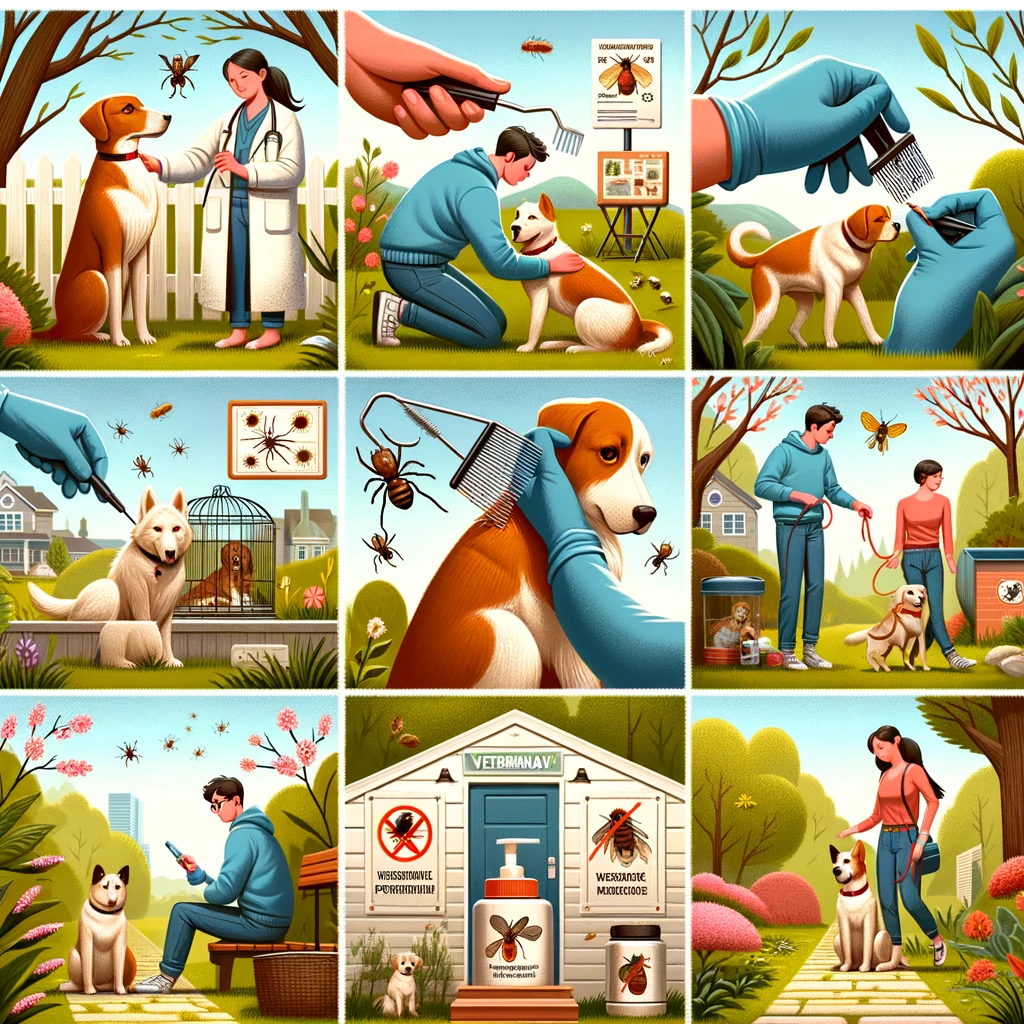Tick and Flea Prevention Tips for Spring: Protecting Your Dog from Seasonal Pests
As the weather warms up and nature comes to life, springtime brings not only beauty but also the return of pesky parasites like ticks and fleas. These tiny pests can pose significant health risks to your furry friend, ranging from skin irritation to more severe diseases like Lyme disease and Rocky Mountain spotted fever. Fortunately, with proper prevention measures, you can keep your dog safe from these seasonal nuisances. Here are some essential tick and flea prevention tips for spring:
1. Use Veterinary-Approved Preventatives: Start by consulting with your veterinarian to determine the most appropriate flea and tick prevention products for your dog. There are various options available, including topical treatments, oral medications, and collars. Your vet can recommend the best option based on your dog’s age, health status, and lifestyle.
2. Stay Consistent with Treatment: Consistency is key when it comes to flea and tick prevention. Be sure to administer preventative treatments as directed by your veterinarian and follow the recommended schedule for reapplication or dosage. Skipping doses or inconsistent use can leave your dog vulnerable to infestations.
3. Conduct Regular Checks: Get into the habit of checking your dog for ticks and fleas regularly, especially after outdoor activities in grassy or wooded areas. Pay close attention to areas where parasites are commonly found, such as around the ears, neck, and tail. Use a fine-toothed comb to help detect and remove any pests hiding in your dog’s fur.
4. Keep Your Yard Tidy: Maintain a well-groomed yard by mowing the lawn regularly and removing leaf litter, tall grass, and other debris where ticks and fleas thrive. Consider creating a barrier of gravel or wood chips between wooded areas and your lawn to reduce the migration of pests into your yard.
5. Limit Outdoor Exposure: Minimize your dog’s exposure to areas where ticks and fleas are prevalent, such as tall grass, wooded areas, and brushy terrain. Stick to well-maintained paths and trails when walking your dog, and avoid letting them roam in areas with high pest activity, particularly during peak times like dawn and dusk.
6. Consider Environmental Treatments: In addition to treating your dog, consider using environmental treatments to control fleas and ticks in your home and yard. Vacuum frequently, wash your dog’s bedding regularly, and use flea and tick control products designed for your home and outdoor spaces.
7. Be Vigilant for Signs of Infestation: Keep an eye out for signs of flea or tick infestation in your dog, such as excessive scratching, redness or irritation of the skin, hair loss, or the presence of visible parasites. If you suspect an infestation, consult with your veterinarian promptly for treatment options.
By following these tick and flea prevention tips for spring, you can help protect your dog from the discomfort and health risks associated with these seasonal pests. Remember that prevention is key, so take proactive measures to keep your furry friend safe and healthy throughout the season. If you have any concerns about tick or flea prevention or need guidance on the best products for your dog, don’t hesitate to reach out to your veterinarian for personalized advice and recommendations.







